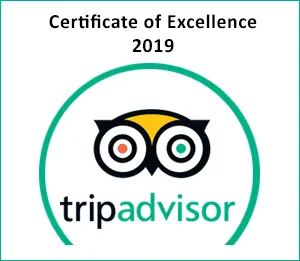Delhi - Leh. (Dinner) Your travel to Ladakh will include a very early morning or slightly later flight from Delhi. Additional services, such as arrival services and airport lodging at Delhi, excursions to the Taj Mahal, and more can be added upon request. Please note that most flights to Leh depart from a domestic terminal Arrive at Leh. You are greeted at the Leh Airport and driven to Leh’s best hotel and you are at leisure to use the facilities until your check-in is available. Acclimatization tea is provided at your arrival. You will be assisted with your check-in when your room is available. Although your guide and driver are on call for your needs, you are at leisure on this day and there are no planned activities. The key to acclimatizing is not to rush.
The Best Tour of Ladakh
- 7 Days
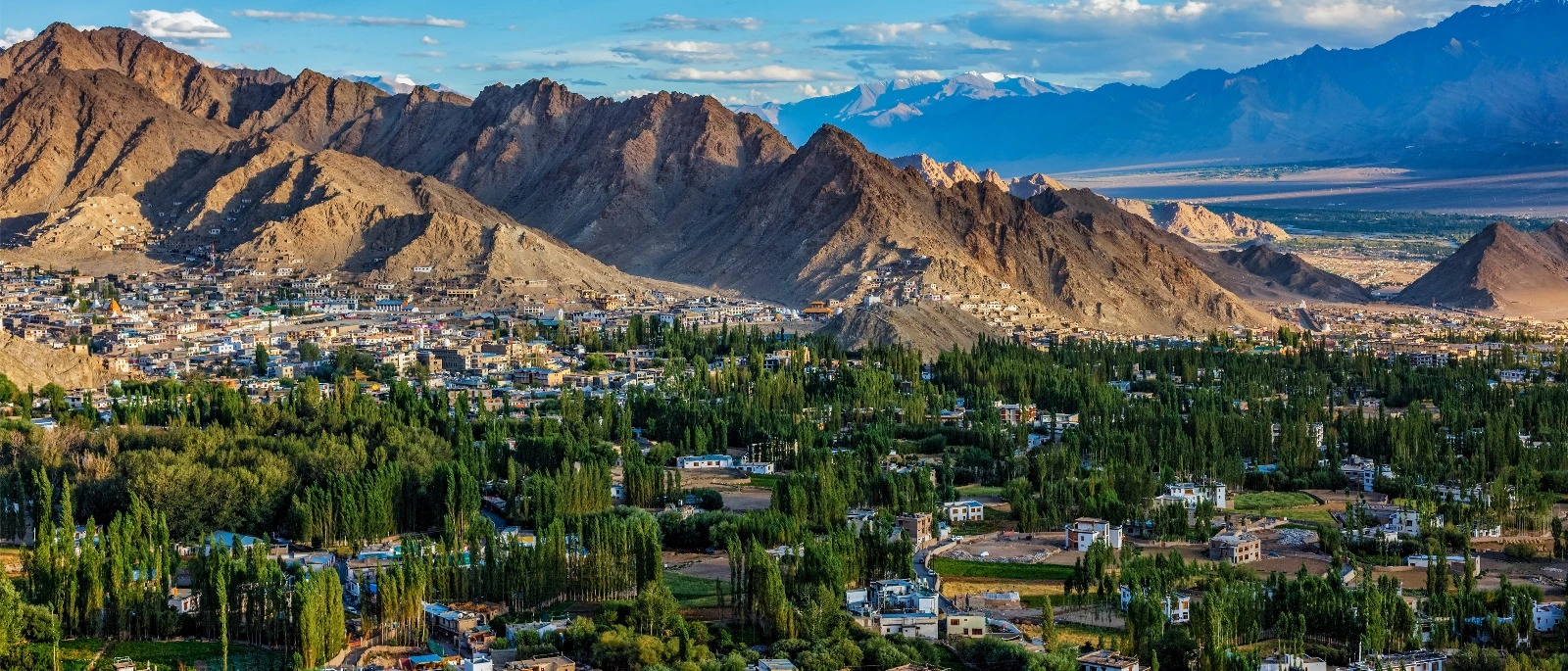
Leh City
Welcome to one of our planet’s most remote and beautiful lands. Historically, Leh was an important stopover on trade routes between Tibet and Kashmir, and also between India and China. The heritage of these interactions is evident in the architectural and cultural nuances of the town. Culturally, Leh is a melting pot of influences, and socially the community in Leh is tightly knit, with a strong sense of mutual aid and cooperation, particularly during farming and religious activities. Houses are typically built from mud bricks and wood, designed to withstand the severe climate while maintaining warmth during the biting winters.
The simple people of Ladakh embody a lifestyle that balances tradition with the challenges posed by their environment. They are welcoming to visitors, eager to share stories of their heritage and to showcase their way of life, which despite modern influences, remains deeply connected to their ancestral land and customs. The Indian Army's presence in Leh and the surrounding areas is significant due to the strategic location, and the Army maintains numerous bases and check-posts in and around Leh.
Dinner is included at your hotel every night you are in Ladakh.
(Overnight – The Grand Dragon Ladakh)
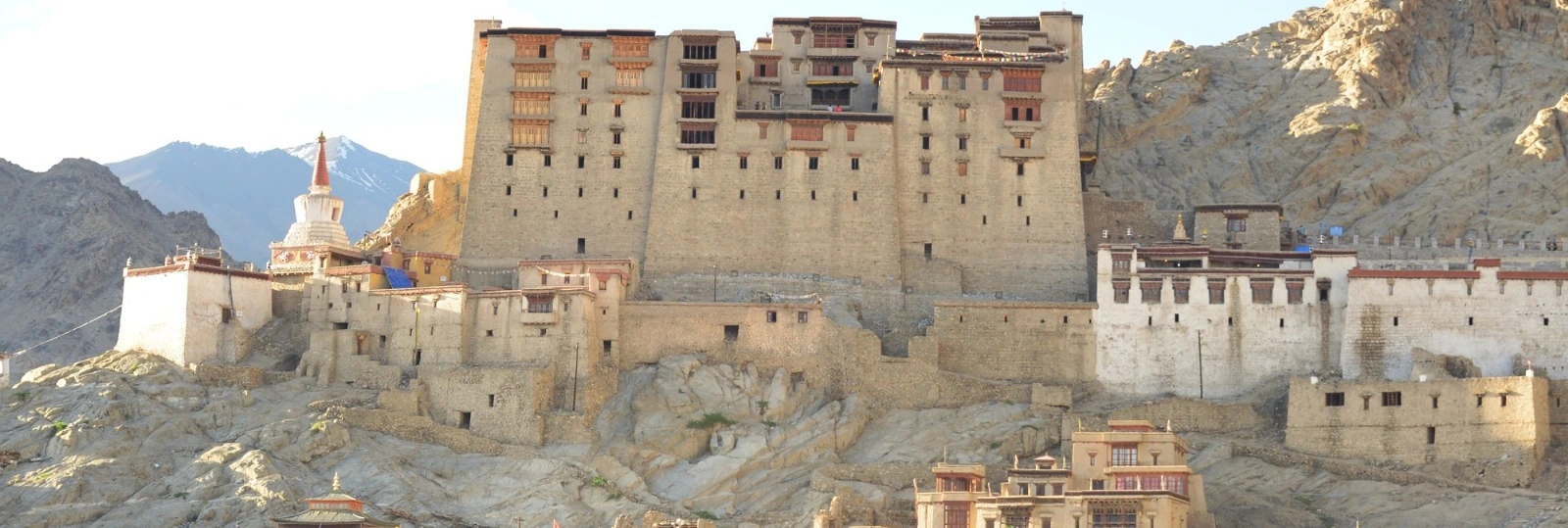
Leh Palace
Day 2: Leh. (Breakfast and Dinner) Start your exploration of Ladakh’s capital city with the Leh Palace, perched on a hill overlooking the town. Constructed in the 17th century, the palace is an exemplary specimen of medieval Tibetan architecture. Although now in ruins, the palace retains a haunting beauty, with its massive walls and wooden balconies offering panoramic views of the surrounding mountains and valleys. Inside, the palace houses a small museum displaying a collection of royal artifacts, including exquisite thangkas, ceremonial crowns, and traditional Tibetan jewelry.
You are driven down to the heart of Leh’s hustle and bustle for a stroll. Walking through the Old City’s narrow lanes, visitors are enveloped in a lively atmosphere where the air is filled with the aromas of local spices and freshly cooked street food. The bazaars offer every necessity of Ladakhi life, and also serve as a cultural melting pot where locals and tourists alike mingle, barter, and exchange stories. It's a place to interact with the friendly locals, learn about their lifestyles, and listen to stories of the old city. This will be a relaxed day with the option to return to your nearby hotel for a break whenever you are so inclined.
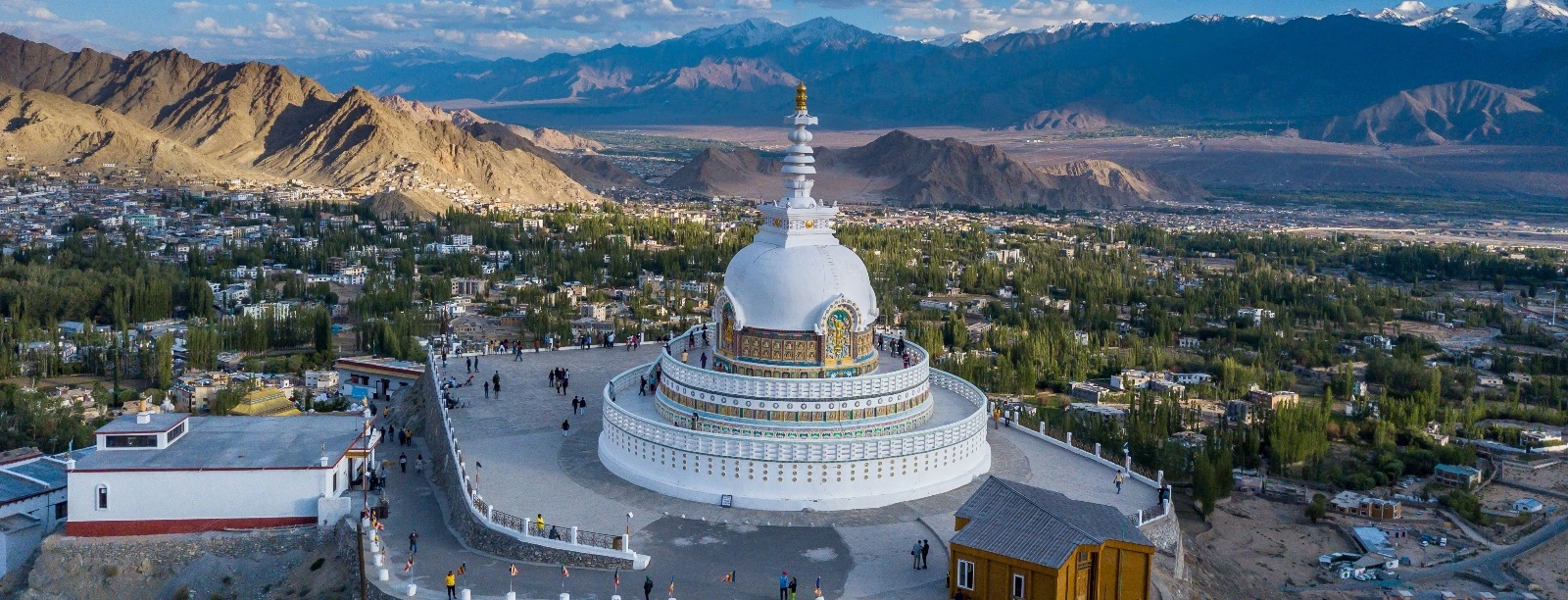
Shanti Stupa
Your day culminates with a sunset from Shanti Stupa, a white-domed peace pagoda that stands as a symbol of a Japanese Buddhist monk’s mission to promote world peace. Perched on a hilltop, it offers a breathtaking overview of Leh, the Stok Range, and the Changspa village. The setting sun drapes the landscape in a golden hue, reflecting the day’s journey through spiritual sites, cultural immersion, and historical exploration, all while reinforcing the serene beauty and profound peace of Ladakh.
(Overnight – The Grand Dragon Ladakh)
Day 3: Leh. (Breakfast and Dinner) A very early start (with a packed breakfast) rewards you with the morning ceremony at Thiksey Monastery. A normal start will still provide many fascinating experiences at the monastery. Resembling the Potala Palace in Lhasa, Tibet, this 12-story complex is one of the largest and most visually striking monasteries in the region.
Built in the mid-15th century, Thiksey Monastery is a splendid example of Ladakhi architecture and is affiliated with the Gelug sect of Tibetan Buddhism. It houses many items of Buddhist art, including stupas, statues, thangkas, and wall paintings. The monastery complex is structured in a hierarchical order with various residential and assembly halls and chapels. Visitors to Thiksey can also enjoy the panoramic views of the Indus Valley that the monastery's elevated position offers.

Thiksey Monastery
The temple houses a striking statue of Maitreya Buddha, which stands at nearly 50 feet tall, spanning two floors of the building., and representing the Buddha of the Future, symbolizing hope and the promise of peace. Thiksey Monastery serves as a large monastic institution for monks who live and study within its precincts. The monastery has facilities for religious training and houses monks who follow a rigorous regimen of spiritual education and practice. Every morning, the monks gather in the main prayer hall for prayers and rituals, creating an ambiance filled with the resonance of chanting and the aroma of incense.
Your journey continues to Hemis Monastery, the largest and richest Buddhist monastery in the Ladakh region. Hidden in a dramatic valley, the Hemis Monastery is a stunning representation of Tibetan Buddhist culture and architectural finesse. Founded in the 17th century, the monastery belongs to the Drukpa Lineage and is architecturally distinguished by its strategic position, nestled into a mountain gorge and surrounded by stark, panoramic views of the Himalayas.
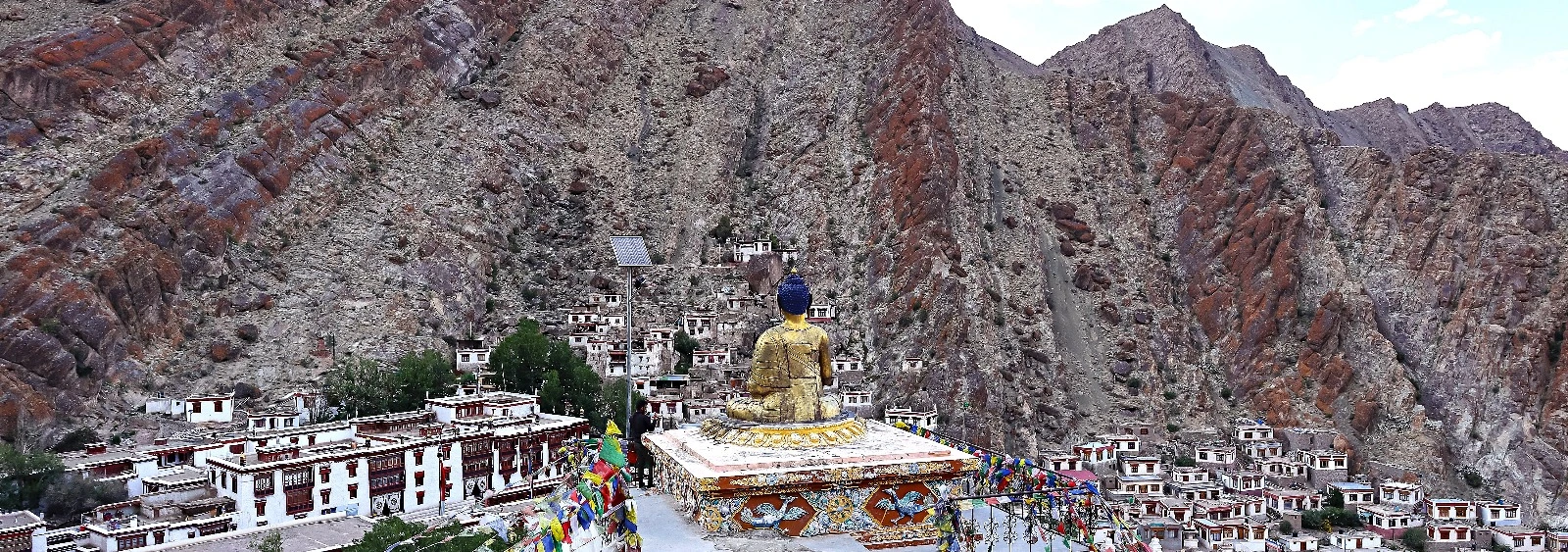
Hemis Monastery
The layout reflects typical Tibetan monastic design with a large courtyard, prayer halls, and residential quarters for monks. The main assembly hall, known as Dukhang, is resplendent with vibrant thangkas (Tibetan religious paintings), murals, and a statue of Guru Rinpoche, an 8th-century Buddhist master to whom the monastery is dedicated. The monastery also serves as a living school, imparting religious training and traditional rites to young monks.
Return to Leh and there is a break for lunch. In the midafternoon, you are driven to Tsemo Victory Fort, an exemplary representation of medieval Tibetan fortification design. This 15th century set of monuments ruins speak volumes of its historical significance as it sits strategically overlooking the entire Leh Valley, with remnants of old chambers, watchtowers, and storerooms.
Indus River View Sunset. The fort offers panoramic views of the surrounding stark and arid landscape, including the cradle of civilization Indus River, the legendary Zanskar Range, and the entire valley of Leh. As the sun begins to dip below the horizon, the sky turns a palette of fiery oranges, pinks, and purples, reflecting off the snowy peaks in the distance.
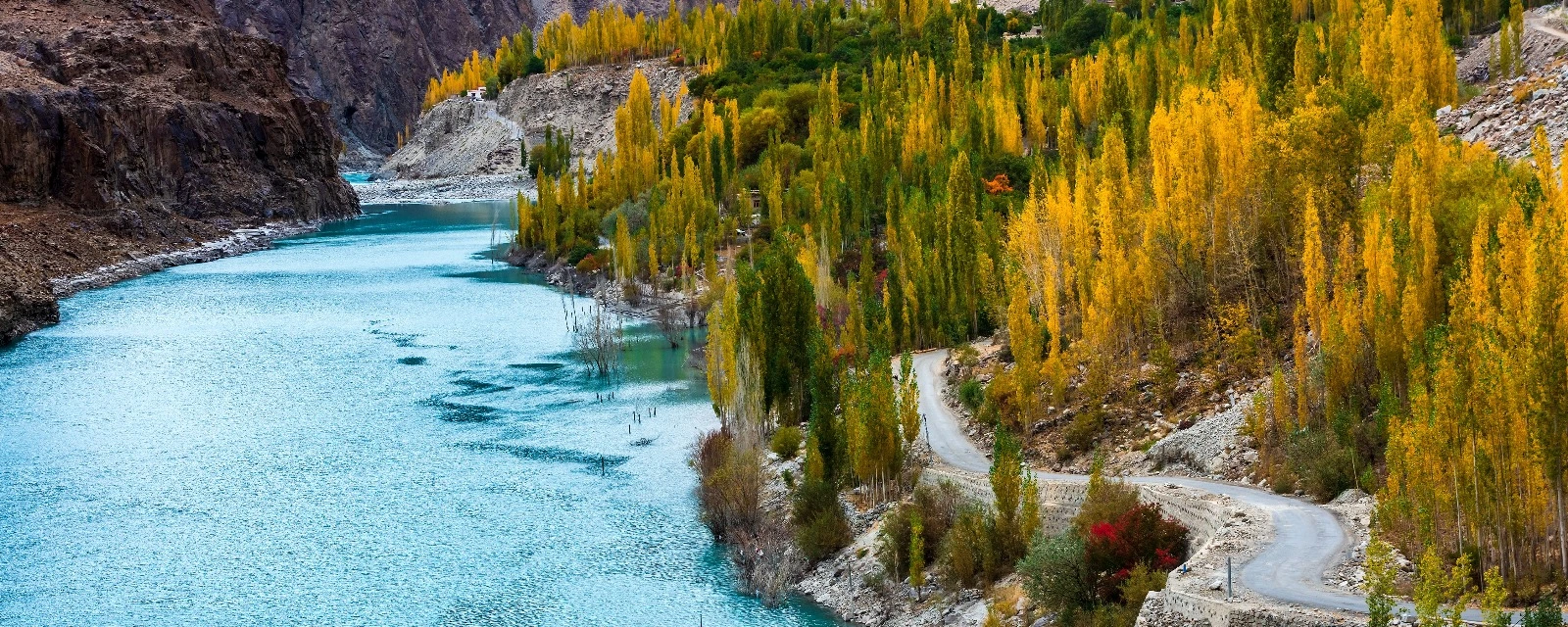
Indus River near Leh
(Overnight – The Grand Dragon Ladakh)
Day 4: Leh. (Breakfast, Picnic Lunch and Dinner) Head out North of Leh and you’ll soon arrive at your first destination, the Gurudwara Pathar Sahib (Sikh Temple). Established in 1517, this gurudwara honors the memory of Guru Nanak, the founder of Sikhism, who is believed to have visited the region during his missionary travels. According to local lore, Guru Nanak Dev Ji was meditating at this spot when a demon attempted to roll a large boulder down the hill to disrupt his meditation. Miraculously, the boulder turned soft upon touching Guru Nanak and molded around his meditative posture, leaving an imprint of his back on the rock.
The temple is built around the sacred boulder containing the imprint of Guru Nanak, which is now enshrined within its sanctum. Like every Gurudwara across the world, the gurudwara complex also includes a langar hall, where free meals are served to all visitors, promoting the Sikh tenet of equality and communal harmony.
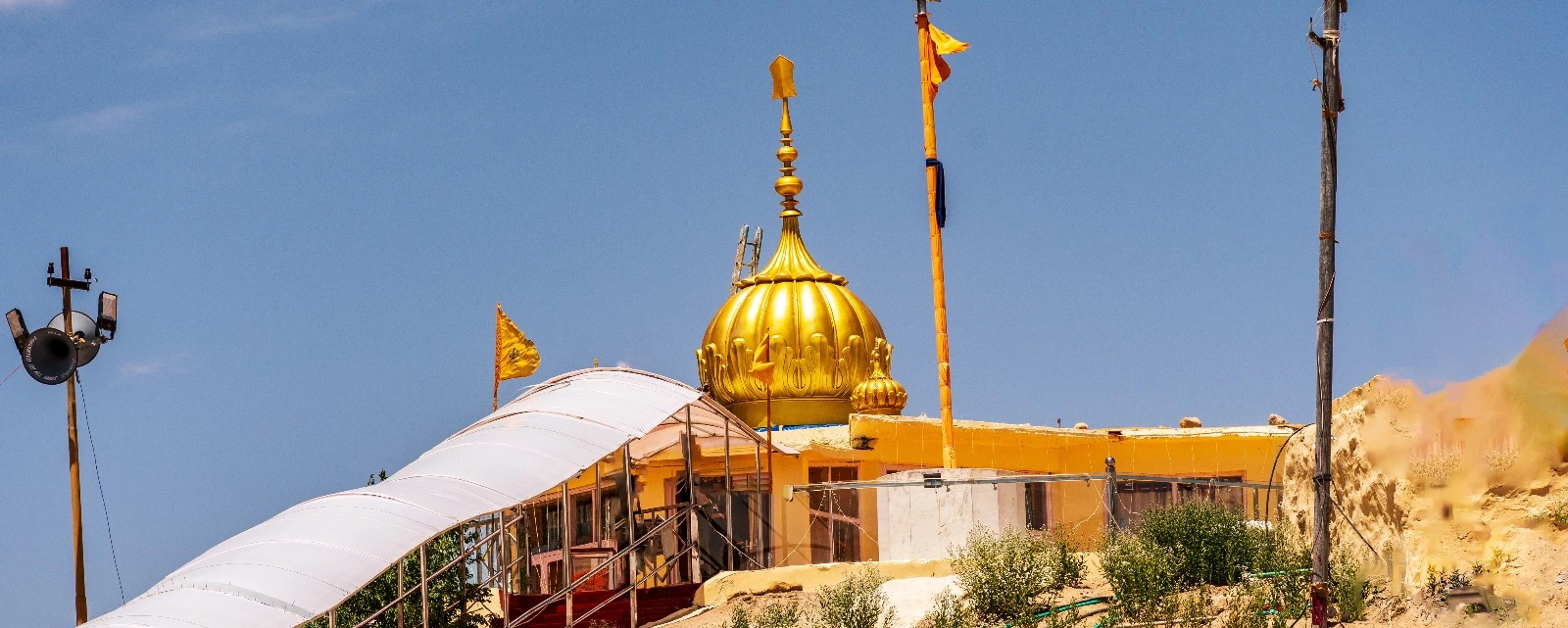
Gurudwara Pathar Sahib
A very short drive brings you to enigmatic Magnetic Hill, a unique location where optical illusions give the impression that vehicles roll uphill against gravity. Your driver will put your vehicle in neutral and it will move uphill, and you can also experience this from outside your car. This is another wonderful photo opportunity against the stark and beautiful backdrop of the Ladakh landscape.
A short drive will bring you to a serene and historic spot ideal for an included picnic lunch. This spot overlooks the confluence of the legendary Indus and Zanskar rivers, both known for their distinct colors and the spectacular view they offer when they merge. River Rafting here can be added at the time of reservation.
Post-lunch, your journey proceeds to the Likir Monastery, which was established in the 11th century and is renowned for its stunning architecture, ancient scriptures, and a striking statue of Maitreya Buddha. It belongs to the Gelugpa sect of Tibetan Buddhism and the name Likir translates to "The Naga - Encircled", referring to the belief that the monastery is guarded by the bodies of two serpent spirits.
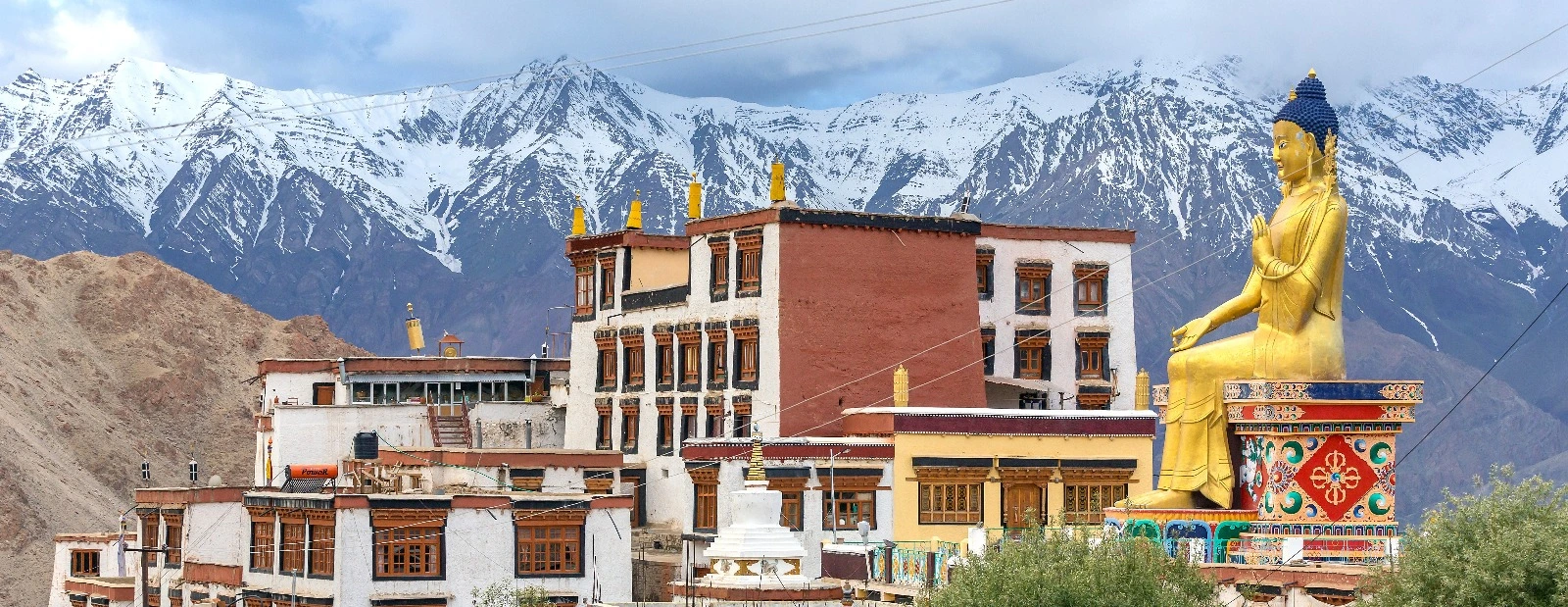
Likir Monastery
The monastery offers a panoramic vista of the surrounding rugged terrain and snow-capped peaks and its architecture is a splendid example of traditional Tibetan design with its whitewashed walls and wooden windows, which stand out against the stark, rocky background. One of the monastery's most remarkable features is a 75-foot-high gold-plated statue of Maitreya Buddha, which is visible from afar. Today, the monastery is also an educational center, with a school providing modern education as well as religious teachings to the young monks. You are driven back to Leh in the late afternoon.
(Overnight – The Grand Dragon Ladakh)
Day 5: Leh – Nubra Valley. (Breakfast and Dinner) Leh to Nubra Valley is an awe-inspiring journey through some of the most stunning and rugged landscapes in the Himalayas. As you leave Leh, the road snakes through rugged terrain, with the barren beauty of the Himalayas stretching in every direction. The colors are a palette of muted earth tones, with splashes of vibrant prayer flags fluttering in the wind.
You will cross Khardung La Pass, the highest motorable road in the world at an altitude of about 18,380. The panoramic views from the pass are among the most stunning in the world. You have the option to stop for photos, and to take advantage of the effective acclimatization tea served by the Indian Army. This warm brew helps mitigate the effects of high altitude.
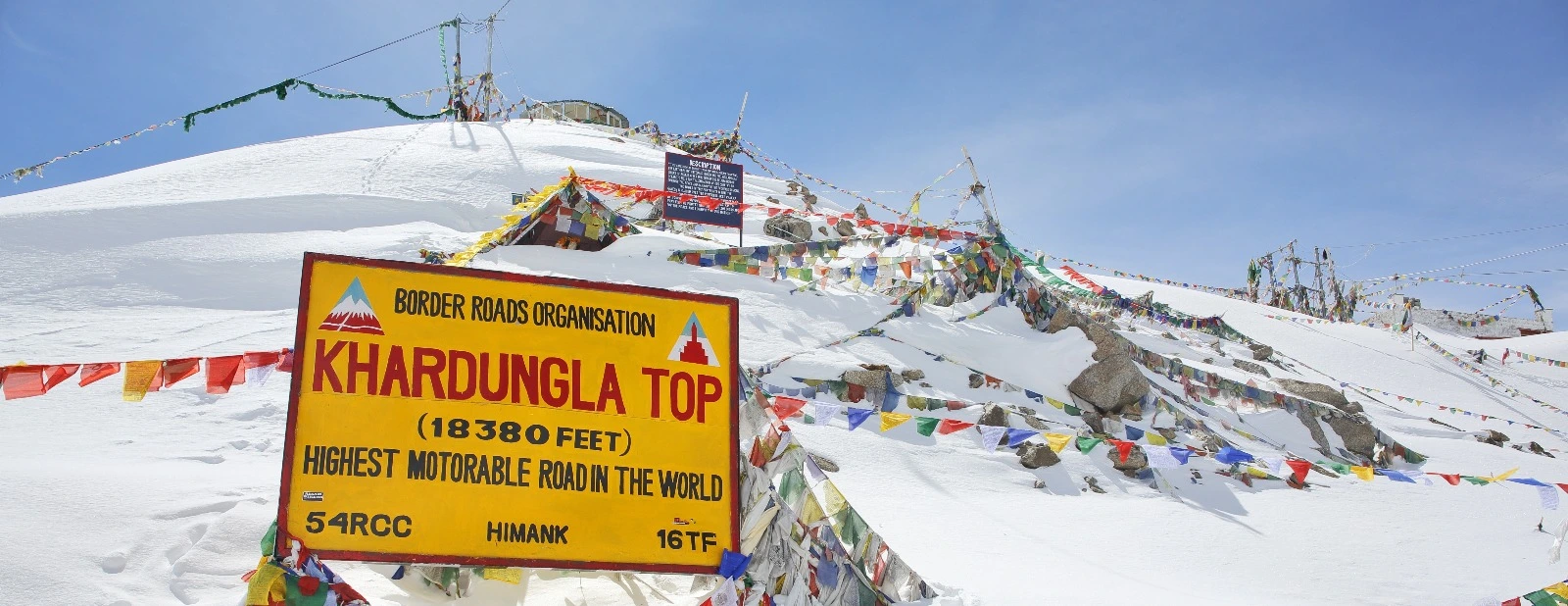
Khardung La Pass
Continuing the descent from Khardung La, the scenery gradually transforms as you enter the Nubra Valley. This area is markedly different from the arid landscape of Leh. Nubra is a high-altitude cold desert with sand dunes, punctuated by small green patches of agricultural land. The Shyok River, flowing through the valley, adds a vibrant lifeline to the region, supporting the orchards and farms of the local communities.
The valley itself is a beautiful blend of desert scenery interspersed with patches of greenery, small villages, and meandering streams, creating a picturesque setting that feels almost surreal. The Diskit Monastery, with its impressive Maitreya Buddha statue, overlooks the valley.
Arrive at Hunder Village in the valley and you are assisted with your check-in to the area’s only upscale lodging, the (fairly new) Stone Hedge Hotel. This wonderful hotel offers amazing views and is set against stark Himalayan cliffs, while the dining, service, and facilities are unmatched in the region. Constructed with local materials and designed in traditional Ladakhi style, the lodge has a commitment to eco-friendly practices and sustainable tourism.
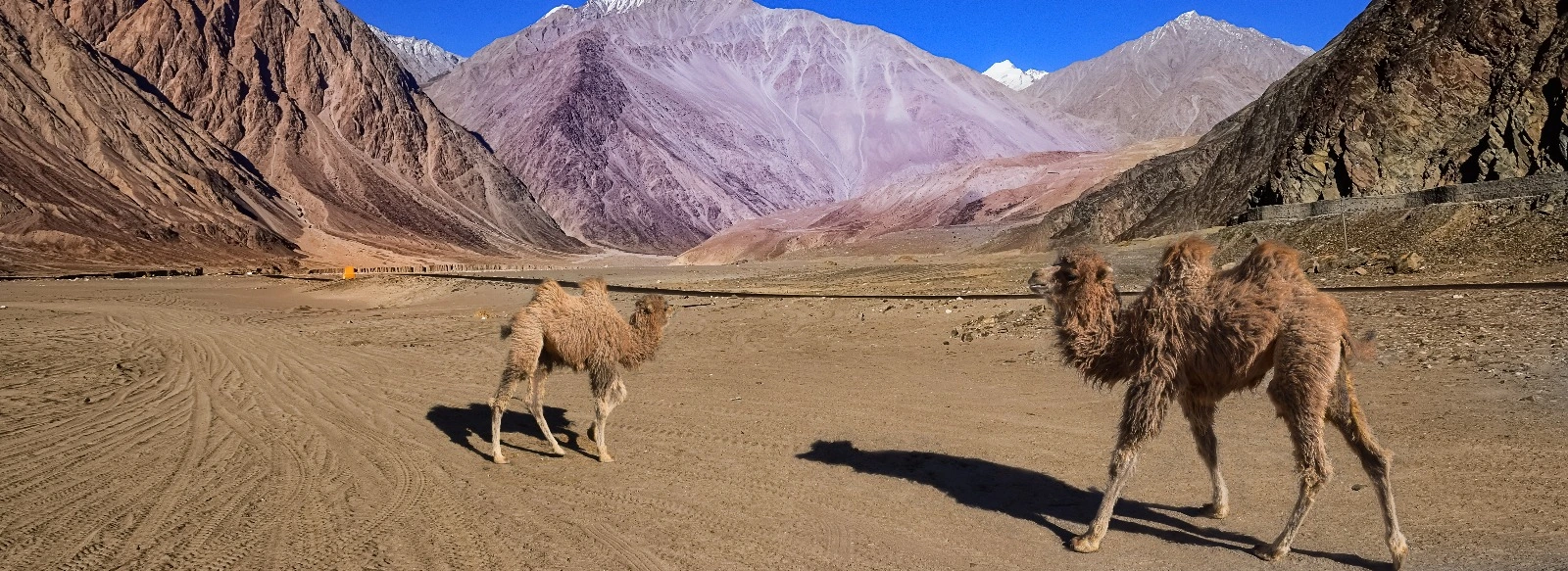
Bactrian Camels at Nubra
Two Hump Camels. This region is especially known for its rare Bactrian camels, which have two humps. You are driven to the edge of a desert area where you have the option to ride these unique high-altitude animals. The camels are equipped with saddles and vibrant bridles and riders are given a brief instruction before slowly setting off on a trail that meanders through the sand dunes, offering panoramic views of the stark yet beautiful landscape. For those who prefer not to ride, walking alongside the camels is equally rewarding. It allows for an up-close interaction with these gentle giants and plenty of opportunities for photography.
(Overnight – Stone Hedge Hotel)
Day 6: Nubra Valley. (Breakfast and Dinner) Your day can start very early in the morning with a drive to Diskit Monastery for the morning ceremony, or the same drive at a later hour.
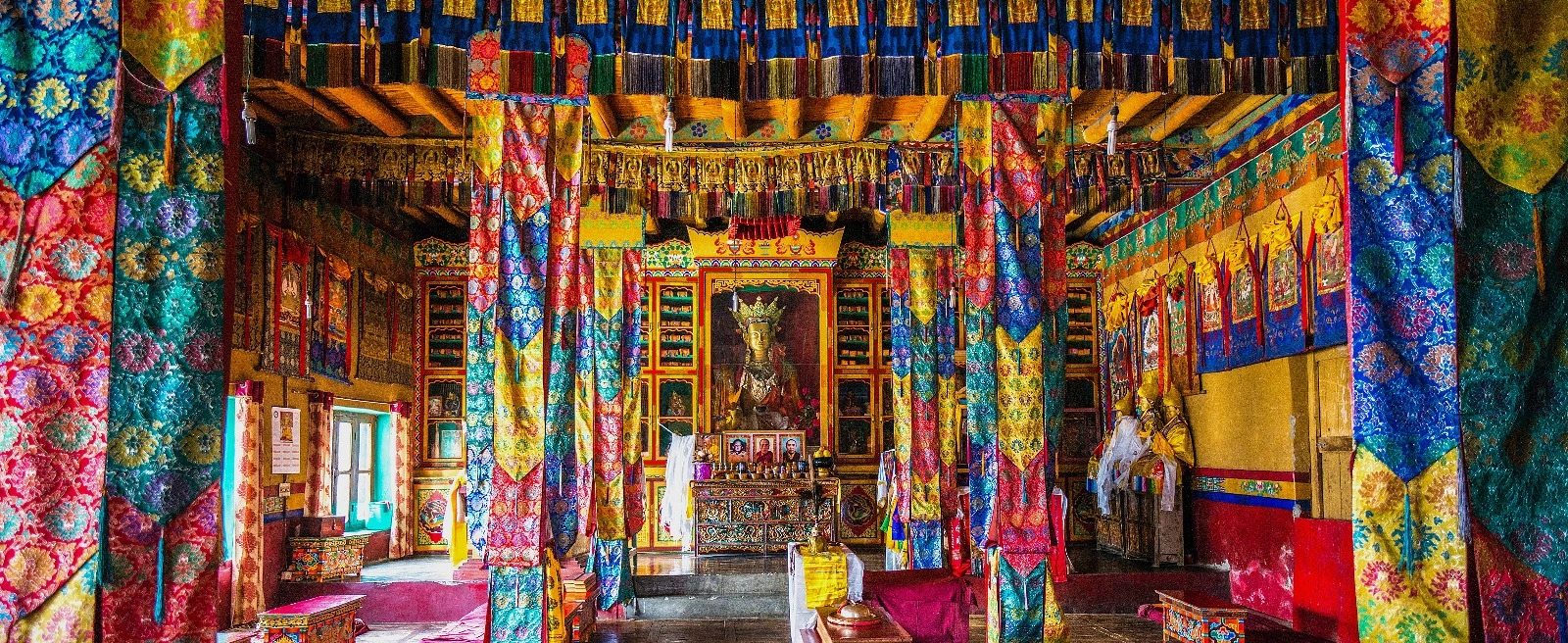
Diskit Monastery Prayer Room
Diskit Monastery. Visiting Diskit Monastery in Ladakh is an unforgettable experience at any time of day, but the morning ceremony at Diskit Monastery is a deeply moving and atmospheric experience. You will arrive just as the first light touches the rugged landscapes of the Nubra Valley. You can hear the resonant chants of the monks, a rhythmic and meditative sound that fills the prayer hall, accompanied by the soft clashing of cymbals and the deep tones of the traditional Tibetan horns.
After the ceremony, you'll explore the monastery itself, which is the oldest and largest in Nubra. Wandering through the intricate network of pathways and staircases that connect the various buildings, you encounter vivid frescoes and murals depicting Buddhist lore, prayer wheels that spin continuously, and statues that are centuries old. Each corner of the monastery offers a glimpse into Buddhist spirituality and the history of Ladakh.
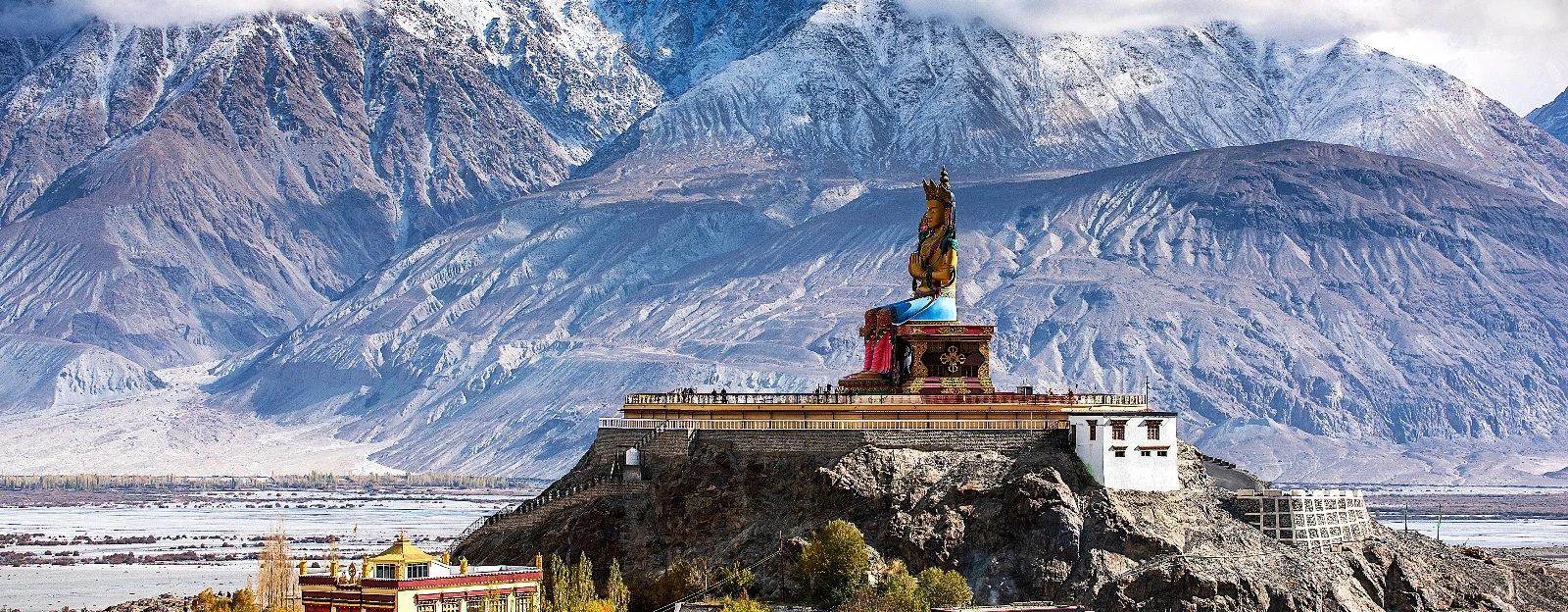
Buddha Statue at Diskit
On the way back to your hotel, you’ll stop at the adjoining bluff where the extremely impressive Maitreya Buddha statue stands tall overlooking the Nubra Valley. The 180-degree view from this location, of the vast valley with different Himalayan ranges in the background, is something you will never forget. Return to your hotel for breakfast and some relaxation.
In the early afternoon you will visit a small family-owned farm, where you can interact with the family, learning about their farming methods that include growing barley, wheat, and a variety of vegetables in the harsh climate. This hands-on experience can include participating in daily farm activities, such as planting or harvesting, depending on the season.
Next up is a leisurely walk through the village, an opportunity to experience the unique architecture of the mud-brick houses that are designed to withstand cold temperatures. Your guide will share stories of Hunder's history and its people's adaptation and understanding of this unique ecosystem. You will run across locals going about their daily business, and your guide is able to initiate a conversation or two if you are so inclined.
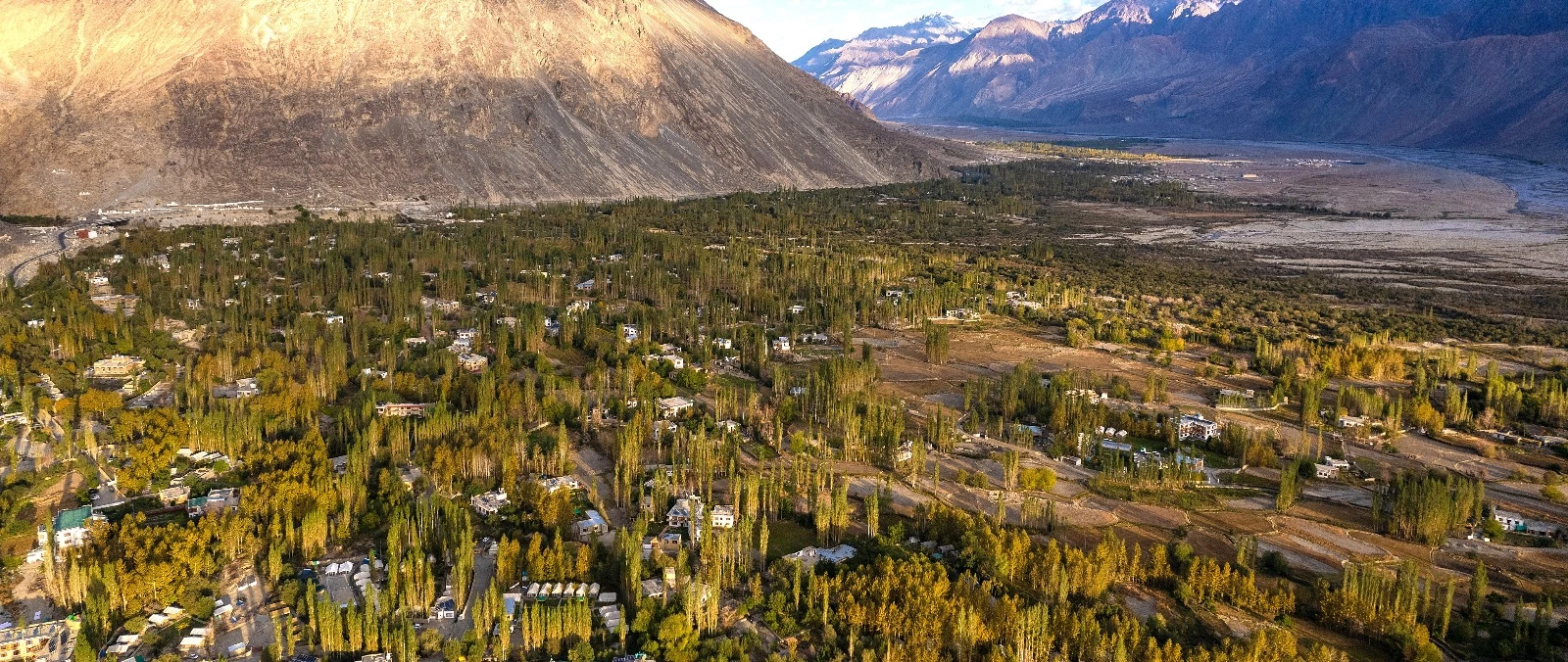
Hunder Village
(Overnight – Stone Hedge Hotel)
Day 7: Nubra Valley – Leh – Delhi – International Flight. (Breakfast) You are assisted with your checkout at 7 AM and now you will head back on the roughly four-hour drive to Leh Airport. At Leh Airport you will check-in for your early afternoon flight to Delhi. Arrive at Delhi and you are greeted at the domestic terminal. If your international flight is within 5 hours of this time, you are driven to the international terminal. If your flight is later, additional services including transfers and airport lodging can be added upon request.
Our Services End at Delhi Airport.
Lodging
| City | Hotel | Room Type |
| Leh |
Grand Dragon
|
Luxury Room
|
| Nubra Valley |
Stone Hedge Hotel
|
Premier Room
|
Inclusions ▼
| Breakfasts and Dinners Daily | |
| Lodging check-in is available at 3 pm / Required check-out is before noon | |
| Applicable monument entrance fees as per the itinerary | |
| All transfers and sightseeing by personal upscale vehicle | |
| Services of one of Ladakh’s best Accompanying Tour Director Guides | |
| Bhutan Tourism Development Fees & Bhutan Government Royalty Fee | |
| Bhutan Visa fee and procurement | |
| Bottled water during sightseeing/excursions and long drives | |
| All currently applicable taxes. |
Exclusions ▼
| Expenses of a personal nature like tips, laundry, telephone calls, drinks, etc. | |
| Meals other than those specified above | |
| Travel insurance, visa, etc. | |
| Camera fees – still and video |
Our Lowest Pricing
| Land Cost - Dbl Occupancy | On Tour Flights | Total Cost |
| $3,950 PP | $484 | $4,434 / per person |
Annual Sale. Aug 16th to Aug 30th
Save 10% On All Our Tours
Subject to Availability of our Preferred Guides & Lodging for Your Dates
Ask Questions Or Send Us Your Dates
Please wait while we are processing your request...




